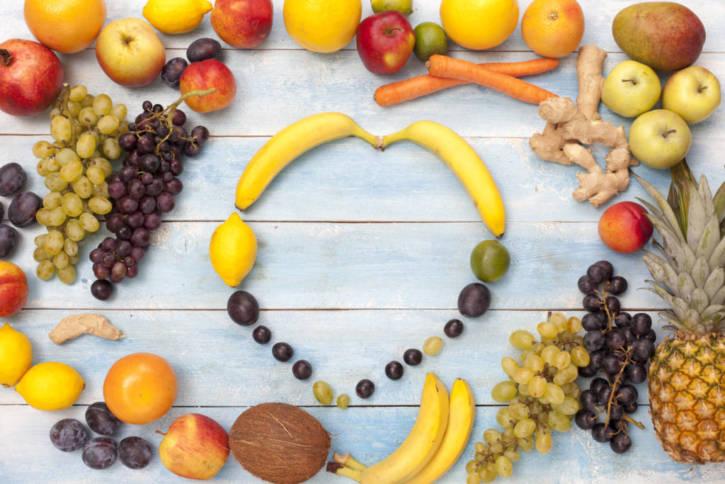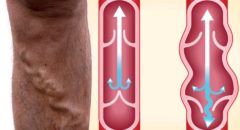 High blood pressure is a common and dangerous condition that increases your risk of heart disease and stroke—two of the leading causes of death for Americans. Moreover, African American men and women have higher rates of high blood pressure than any other race or ethnic group. The good news is, there are steps you can take to prevent high blood pressure or to control it if your blood pressure is already high.
High blood pressure is a common and dangerous condition that increases your risk of heart disease and stroke—two of the leading causes of death for Americans. Moreover, African American men and women have higher rates of high blood pressure than any other race or ethnic group. The good news is, there are steps you can take to prevent high blood pressure or to control it if your blood pressure is already high.
RELATED: 7 Simple Ways To Naturally Lower High Blood Pressure
Most everyone knows that if you have high blood pressure, you should ditch the salt shaker and shy away from packaged, processed, store-bought and restaurant foods. These foods are loaded with sodium. But you might be surprised to know that potassium also affects your blood pressure. The 2015-2020 Dietary Guidelines for Americans recommends at least 4,700 milligrams (mg) of potassium a day. Unfortunately, most Americans aren’t getting nearly enough potassium.
Scientific evidence shows that an average increase of 1,540 mg of potassium—about three extra servings of high potassium foods—a day can help prevent some of the harmful effects that sodium can have on blood pressure.
RELATED: 5 Amazing Foods That Lower High Blood Pressure
6 Foods That Help Lower Blood Pressure
The best sources of potassium in the diet are vegetables, fruits, beans, dairy products, fish and nuts.
Vegetables:
Beet greens, tomato products, winter squash and spinach are rich sources of potassium. Vegetables should be consumed in a nutrient-dense form, with limited additions such as salt, butter or creamy sauces. When selecting frozen or canned vegetables, choose those lower in sodium.
Fruit:
Prune juice, bananas, cantaloupe, honeydew, prunes, dried peaches or apricots, orange juice, and plantains are all high in blood pressure-lowering potassium. Most fruits are naturally low in fat, sodium and calories. Eat fruits raw, as juice with no sugar added, or canned in their own juice. Avoid canned fruit in heavy syrup.
Beans:
Kidney beans, pinto beans, white beans, black beans, garbanzo beans (chickpeas), lima beans (mature, dried), split peas, lentils and edamame (green soybeans) have as much as 595 mg potassium in just one half cup. Canned and cooked dried beans provide the same nutrients, but added sodium is the main problem. Draining and then rinsing canned beans under running water for about one minute can remove as much as 40 percent of the sodium. Or, look for low- or reduced-sodium versions, or those with “no salt added.”
Dairy:
Dairy foods, especially yogurt, fluid milk, and soy milk (soy beverages), provide potassium. Choose fat-free (skim) or low-fat (1 percent) milk and yogurt. If you can’t drink milk because of lactose intolerance, eat yogurt which is more easily digested. One cup of non-fat yogurt provides 579 mg potassium. Or, choose some of the lactose-free dairy products that are widely available.
Fish:
Shellfish such as shrimp, lobster, crab and mussels are excellent sources of potassium. Flounder, halibut, sardines, tuna and salmon, are also good sources of potassium. Most fish are high in omega-3 fatty acids which are heart healthy and can also help to lower blood pressure. To control calories, avoid breading or deep fat frying fish.
RELATED: Five Lifestyle Changes to Help You Lower Blood Pressure
Nuts:
Almonds, hazelnuts, mixed nuts, peanuts, walnuts, sunflower seeds, peanut butter are all rich sources of potassium. Nut butters like almond, cashew and peanut have the same nutritional advantages as nuts. Portion control is advised, as nuts are high in fat. Opt for unsalted nut varieties.
Click here for the top 50 food sources of potassium.
Caution: If you have problems with your kidneys you may need to restrict potassium. Talk to your health care provider to determine how much potassium is right for you. Don’t take potassium supplements unless recommended by your doctor. Too much potassium can cause heart irregularities.









